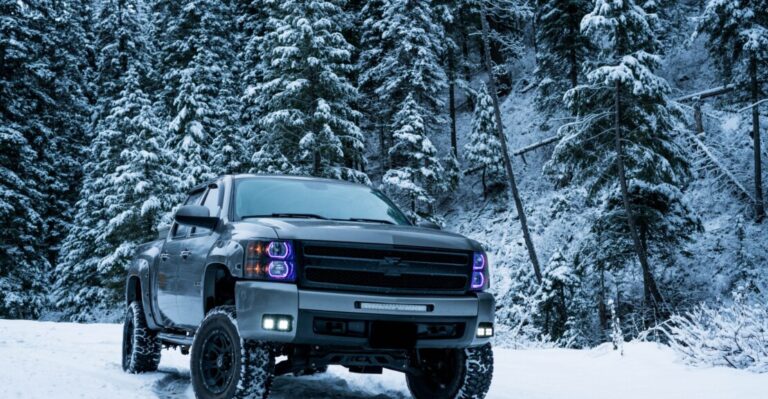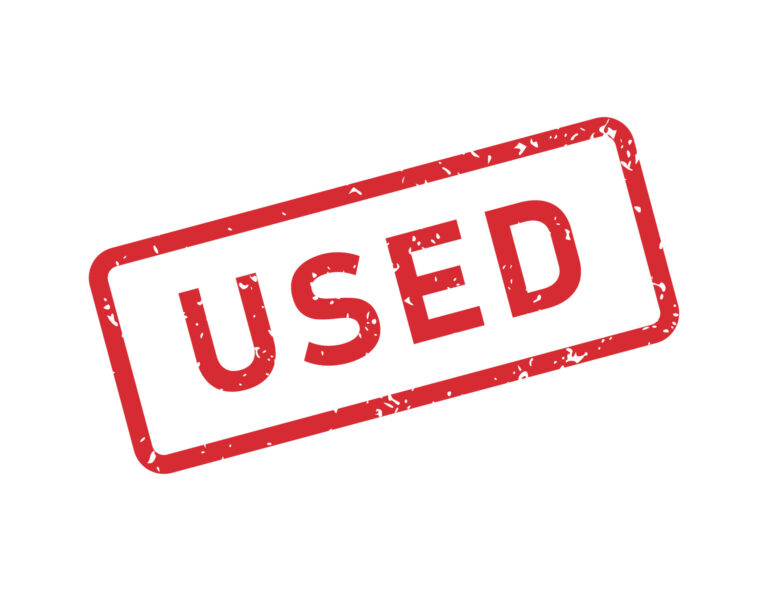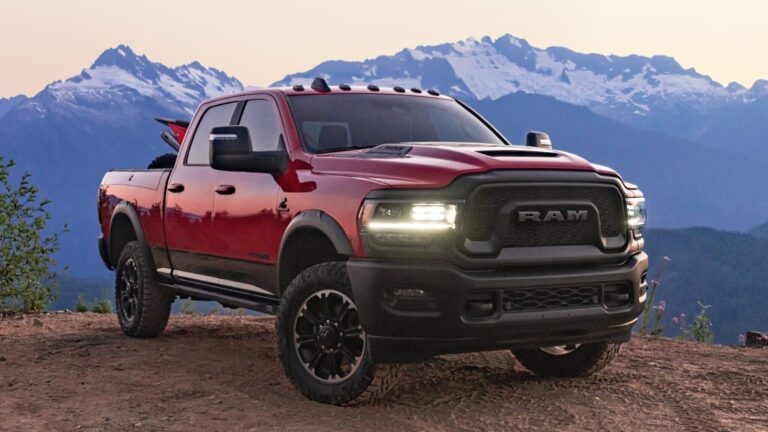73-79 Ford Trucks For Sale: A Comprehensive Buyer’s Guide
73-79 Ford Trucks For Sale: A Comprehensive Buyer’s Guide cars.truckstrend.com
Introduction: The Enduring Appeal of the "Dentside" F-Series
In the vast landscape of classic American trucks, few generations command the enduring affection and widespread appeal of the 1973-1979 Ford F-Series. Affectionately dubbed "Dentsides" by enthusiasts due to the characteristic bodyline running along their sides, these trucks represent a sweet spot in automotive history: a blend of rugged utility, iconic styling, and a burgeoning sense of comfort that set the stage for modern pickups. For many, the 73-79 Ford truck isn’t just a vehicle; it’s a nostalgic symbol of a bygone era, a reliable workhorse, or the perfect canvas for a custom build.
73-79 Ford Trucks For Sale: A Comprehensive Buyer’s Guide
Whether you’re a seasoned collector, a first-time classic truck buyer, or simply a fan of robust American iron, the market for 73-79 Ford trucks remains vibrant. Their importance stems from their incredible durability, straightforward mechanicals, and a timeless design that continues to turn heads. This comprehensive guide will delve into every aspect of finding, evaluating, and purchasing your ideal Dentside, offering practical advice and insights to ensure a successful acquisition.
I. Why the 6th Gen F-Series? A Timeless Appeal
The 1973-1979 F-Series, Ford’s sixth generation of its legendary pickup line, brought significant advancements and a distinct aesthetic that solidified its place in automotive lore.
- Iconic Design: The "Dentside" moniker perfectly describes their most distinguishing feature: a concave, full-length body-side molding that gives them a unique, muscular look. Coupled with redesigned grilles, larger cabs, and the classic twin I-beam front suspension, these trucks exude a utilitarian charm combined with undeniable style. They strike a perfect balance between the raw simplicity of earlier generations and the more refined, aerodynamic designs that followed.
- Unrivaled Durability: Built on robust frames and featuring heavy-duty components, these trucks were engineered to work. Ford’s legendary Twin I-Beam front suspension offered a smoother ride than solid axles while maintaining impressive strength. Many of these trucks have served as farm vehicles, construction haulers, and family workhorses for decades, a testament to their inherent toughness.
- Versatility: From basic work trucks to surprisingly well-appointed custom cruisers, the Dentside platform is incredibly versatile. They are equally at home hauling lumber, cruising to a car show, or serving as a reliable daily driver with a dose of classic flair. Their simple mechanicals also make them highly customizable and relatively easy to maintain for the average enthusiast.
- Nostalgia and Community: For many, owning a 73-79 Ford truck is about reliving memories or connecting with a rich automotive heritage. A passionate community of owners and restorers exists, offering a wealth of knowledge, support, and camaraderie.

II. Key Models and Configurations
The 6th Generation F-Series offered a wide array of models, body styles, and powertrain options, catering to diverse needs and budgets.
- F-100/F-150:
- F-100: The original half-ton workhorse, available in 2WD and 4WD.
- F-150: Introduced in 1975, the F-150 became the new "heavy-duty half-ton," often exceeding the F-100 in popularity and payload capacity, specifically to bypass new emissions regulations that applied to vehicles under 6,000 lbs GVWR. Both F-100 and F-150 were available in short-bed (6.5 ft) and long-bed (8 ft) configurations, as well as regular cab and SuperCab (extended cab with small rear jump seats, introduced in 1974).
- F-250: The three-quarter-ton model, designed for heavier loads. Available in 2WD and 4WD, and also offered with the SuperCab option. High-Boys (pre-1977.5 4×4 F-250s with divorced transfer cases and taller stance) are particularly sought after.
- F-350: The one-ton workhorse, often found as a cab-and-chassis for utility bodies or dually configurations (introduced in 1973). These are less common but ideal for serious hauling.
Engine Options: Ford offered a robust lineup of engines for the Dentsides:
- Inline-6:
- 300 cu in (4.9L): The legendary "Big Six." Renowned for its bulletproof reliability, massive low-end torque, and incredible longevity. A favorite for work trucks and those seeking ultimate durability.
- Small Block V8s:
- 302 cu in (5.0L): A versatile V8, offering a good balance of power and efficiency for its time.
- 351M (Modified) / 351W (Windsor): The 351M (400 cu in was also part of this family) was common in later models, while the 351W was less common in trucks but highly regarded. Both offer more power than the 302.
- Big Block V8s:
- 390 cu in (6.4L): An older FE-series engine, found in early 73-76 models. Powerful and torquey.
- 400 cu in (6.6L): A Cleveland-based engine, very common in later Dentsides. Good power, but sometimes suffers from oiling issues if not maintained.
- 460 cu in (7.5L): The king of torque, typically found in F-250s and F-350s. Great for heavy hauling, but thirsty.
Transmission Options:
- Manuals: 3-speed (column or floor), 4-speed (various heavy-duty options like the NP435 or T-18).
- Automatics: C4 (lighter duty, often paired with 302), C6 (heavy-duty, paired with larger V8s and for towing).
III. Where to Find Your 73-79 Ford Truck
The market for these classics is robust, with various avenues to explore:
- Online Marketplaces:
- Facebook Marketplace: Excellent for local finds, often with detailed photos and direct seller interaction. Use specific search terms like "197x Ford F-150," "Dentside," or "F-Series."
- Craigslist: Similar to Facebook Marketplace for local listings. Be wary of scams and always verify details.
- eBay Motors: Offers a wider geographical reach, good for specific models or highly customized trucks. Includes auction and "Buy It Now" options.
- Specialized Classic Car Websites:
- Hemmings Motor News: A long-standing authority for classic vehicles, featuring a wide range of trucks from projects to show quality.
- ClassicCars.com / AutoTrader Classics: Aggregators that list vehicles from private sellers and dealerships specializing in classics.
- Auctions:
- Mecum, Barrett-Jackson, RM Sotheby’s: These high-profile auctions typically feature fully restored or highly original, premium examples. Expect top dollar here.
- Local Auctions/Estate Sales: Can be hit or miss, but sometimes yield hidden gems at a good price.
- Local Classifieds & Word of Mouth: Don’t underestimate the power of local newspapers, bulletin boards, and simply telling friends and family what you’re looking for. Many great trucks are found this way before they hit the online market.
- Specialty Dealerships/Restoration Shops: Some dealerships specialize in classic trucks, offering thoroughly inspected or even restored vehicles, albeit at a premium. Restoration shops might know of projects for sale or vehicles coming out of their shop.
Tips for Searching: Be specific with your search terms (e.g., "1977 F-150 4×4," "Ford Dentside long bed"). Be patient; the right truck might not appear immediately.
IV. What to Look For: A Buyer’s Guide
Inspecting a classic truck requires a keen eye and an understanding of common issues. Always assume the seller hasn’t disclosed everything.
- Rust (The #1 Enemy): This is paramount. Dentsides are notorious for rust in specific areas:
- Cab Corners and Rocker Panels: Check inside and out, especially below the doors.
- Floorboards: Under the carpet/mat, especially near the kick panels and seat mounts.
- Fender Wells and Inner Fenders: Look for bubbling paint or holes.
- Bed: Floor of the bed (under bed liner if present), wheel wells, and bed supports underneath.
- Frame Rails: Critically important. Check for rot, especially near suspension mounting points, under the cab, and at the rear. Surface rust is common; deep pitting or holes are red flags.
- Drip Rails: Above the doors, these can rust and leak.
- Engine Condition:
- Leaks: Oil, coolant, power steering fluid. Minor leaks might be acceptable, but major ones indicate problems.
- Smoke: Blue (oil), white (coolant), or black (rich fuel mixture) smoke from the exhaust indicates issues.
- Noises: Ticking (lifters), knocking (rod bearings), or other unusual sounds.
- Start-up: Does it start easily, hot or cold?
- Fluid Condition: Check oil (dark but not sludgy), coolant (clean, not rusty or oily).
- Transmission:
- Manual: Smooth shifting, no grinding, clutch engagement.
- Automatic: Smooth shifts through all gears, no slipping, proper engagement in reverse. Check fluid level and color (should be red, not brown or black).
- Suspension and Steering:
- Twin I-Beam: Check bushings, ball joints, and tie rods for wear. This system can be prone to "death wobble" if components are worn.
- Leaf Springs: Look for broken leaves or sagging.
- Steering Play: Excessive looseness in the steering wheel indicates worn steering box, rag joint, or linkage components.
- Brakes: Check pedal feel (spongy or hard), look for leaks at calipers/wheel cylinders and brake lines.
- Electrical System: Test all lights (headlights, tail lights, turn signals, brake lights), gauges, wipers, heater fan, and radio. Old wiring can be brittle and prone to shorts.
- Interior:
- Seats: Rips, tears, foam condition.
- Dash: Cracks (very common, especially on sun-exposed trucks).
- Headliner and Door Panels: Condition, signs of water leaks.
- Gauges: Functionality.
- Documentation: A clear title is essential. Any maintenance records, even partial, are a bonus.
- Originality vs. Modified: Decide what you’re looking for. A highly original, numbers-matching truck will command a higher price but might require preservation. A modified truck could have upgrades (engine swaps, suspension lifts) that may or may not suit your taste.
V. Common Challenges and Solutions
Owning a Dentside comes with its quirks, but most challenges have straightforward solutions.
- Rust Repair: Extensive rust can be costly to repair professionally. DIY options exist with patch panels and welding, but require skill. Fortunately, many reproduction body panels (fenders, bedsides, floor pans) are available.
- Parts Availability: Generally excellent! Due to their popularity, a vast aftermarket exists for mechanical, body, and interior parts. Used parts are also readily available from salvage yards specializing in classic trucks. Some NOS (New Old Stock) parts can still be found but are increasingly rare and expensive.
- Fuel Economy: Let’s be honest, these are not fuel-efficient vehicles. The larger V8s, especially the 460, are notoriously thirsty.
- Solution: Proper carburetor tuning, ensuring the engine is in good tune, and avoiding heavy acceleration can help. For those seeking significant improvement, modern engine swaps (e.g., Coyote 5.0L, LS-based engines, or even diesel) or aftermarket fuel injection kits are popular but expensive options.
- Modernization: If you plan to daily drive your Dentside, you might want modern conveniences.
- Solutions: Adding power steering and power brakes (if not already equipped), air conditioning (aftermarket kits are available), upgrading the sound system, or even converting to fuel injection for better reliability and cold starts. Suspension upgrades (shocks, sway bars) can improve ride quality.
- Finding a Good Mechanic: Not all modern shops are familiar with carbureted engines, drum brakes, or older electrical systems.
- Solution: Seek out specialized classic car shops, experienced independent mechanics, or "hot rod" shops. Leverage online forums and local car clubs for recommendations.
VI. Tips for a Successful Purchase
- Set a Realistic Budget: This includes the purchase price, immediate repairs, potential restoration costs, insurance, and registration. Be honest about how much you’re willing to spend.
- Define Your Purpose: Are you looking for a show truck, a reliable daily driver, a weekend cruiser, or a full-blown project? This will significantly narrow your search and influence your budget.
- Get a Pre-Purchase Inspection (PPI): If possible, have a trusted mechanic (ideally one familiar with classic vehicles) inspect the truck before you buy, especially if it’s a significant investment or you’re buying sight unseen. This can uncover hidden issues and give you leverage for negotiation.
- Don’t Rush: The perfect truck might not be the first one you see. Be patient and be prepared to walk away if something doesn’t feel right.
- Negotiate: Always be prepared to negotiate the price, especially if you find issues during your inspection.
- Factor in Transportation: If buying out of state, consider the cost of shipping or the time/expense of flying and driving it home.
Price Table for 73-79 Ford Trucks For Sale (Estimates)
Prices for 73-79 Ford trucks vary wildly based on condition, model, engine, originality, 2WD/4WD, and geographic location. The table below provides general estimates and should be used as a guideline only. Fully restored, rare, or highly customized examples can easily exceed these ranges.
| Model / Configuration | Condition: Project / Parts | Condition: Driver Quality | Condition: Good Condition | Condition: Show Quality |
|---|---|---|---|---|
| F-100/F-150 2WD | $1,500 – $5,000 | $5,000 – $12,000 | $12,000 – $25,000 | $25,000 – $50,000+ |
| F-100/F-150 4×4 | $2,500 – $7,000 | $7,000 – $18,000 | $18,000 – $35,000 | $35,000 – $70,000+ |
| F-250 2WD | $1,000 – $4,000 | $4,000 – $10,000 | $10,000 – $20,000 | $20,000 – $40,000+ |
| F-250 4×4 (Highboy) | $3,000 – $8,000 | $8,000 – $25,000 | $25,000 – $50,000 | $50,000 – $90,000+ |
| F-250 4×4 (Lowboy) | $2,000 – $6,000 | $6,000 – $15,000 | $15,000 – $30,000 | $30,000 – $60,000+ |
| F-350 (Cab & Chassis/Dually) | $1,000 – $5,000 | $5,000 – $12,000 | $12,000 – $25,000 | $25,000 – $50,000+ |
| SuperCab (Add to above) | +$500 – $2,000 | +$1,000 – $3,000 | +$2,000 – $5,000 | +$3,000 – $8,000+ |
Note: "Project/Parts" implies significant work or only suitable for parts. "Driver Quality" means it runs and drives, but has cosmetic and/or minor mechanical issues. "Good Condition" indicates a well-maintained, largely original truck that might need minor work. "Show Quality" refers to professionally restored or exceptionally original trucks.
Frequently Asked Questions (FAQ)
Q1: Are parts hard to find for 73-79 Ford trucks?
A1: No, parts availability is generally excellent. Due to their popularity and the large number produced, there’s a robust aftermarket for mechanical, body, and interior components. Used parts are also readily available.
Q2: Are 73-79 Ford trucks reliable as daily drivers?
A2: With proper maintenance, yes. Their simple mechanicals make them relatively easy to work on and inherently robust. However, they lack modern safety features and fuel efficiency. Many owners choose to upgrade components like brakes, steering, and add A/C for daily driving comfort.
Q3: What’s the best engine for a 73-79 Ford truck?
A3: It depends on your needs. The 300 inline-6 is legendary for reliability and torque, perfect for a workhorse or those seeking simplicity. The 302 and 351M/W V8s offer a good balance for general use. The 460 V8 provides immense power for towing but is very thirsty.
Q4: How much should I budget for restoration?
A4: Restoration costs vary wildly. A full, professional frame-off restoration can easily cost $30,000 to $80,000+, often exceeding the truck’s market value. A more modest, driver-quality restoration might be $5,000-$20,000, depending on what you do yourself. Always budget more than you initially think.
Q5: Do 73-79 Ford trucks hold their value?
A5: Generally, yes. Their classic status, rugged appeal, and the finite number of good examples mean they tend to hold or even appreciate in value, especially well-maintained or properly restored examples. They are a relatively safe classic vehicle investment.
Conclusion
The 1973-1979 Ford F-Series trucks hold a special place in the hearts of automotive enthusiasts, and for good reason. Their distinctive "Dentside" styling, coupled with their legendary durability and versatile nature, makes them highly desirable in today’s classic truck market. Whether you’re seeking a rugged workhorse, a nostalgic weekend cruiser, or the foundation for a stunning custom build, a Dentside offers a unique blend of heritage and practicality.
Embarking on the journey to find and own one of these iconic pickups is an exciting endeavor. By understanding the different models, knowing where to search, diligently inspecting potential candidates for common issues like rust, and setting a realistic budget, you can navigate the market with confidence. The reward is not just a classic vehicle, but a piece of American history that promises years of enjoyment and a connection to a passionate community. The perfect 73-79 Ford truck is out there, waiting for its next chapter with you behind the wheel.




